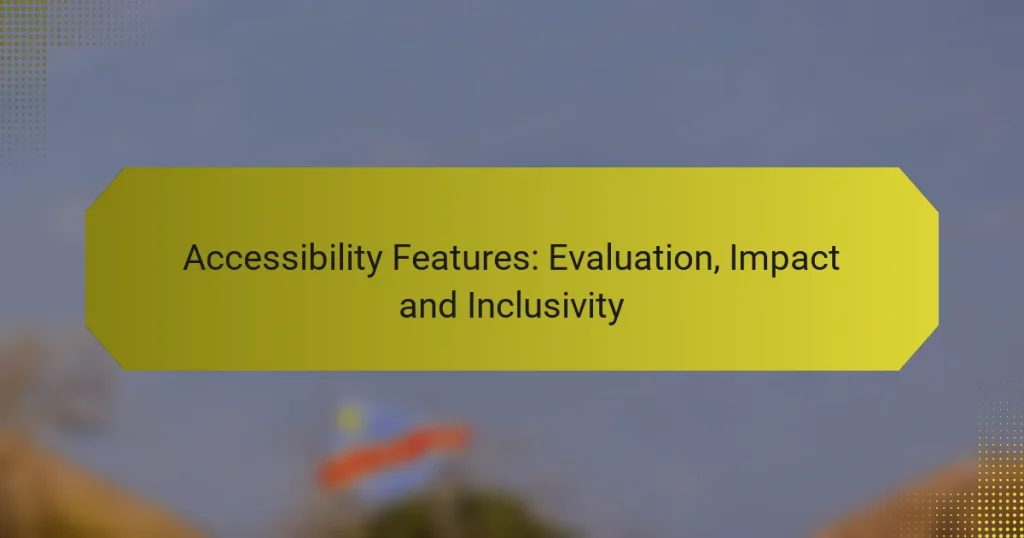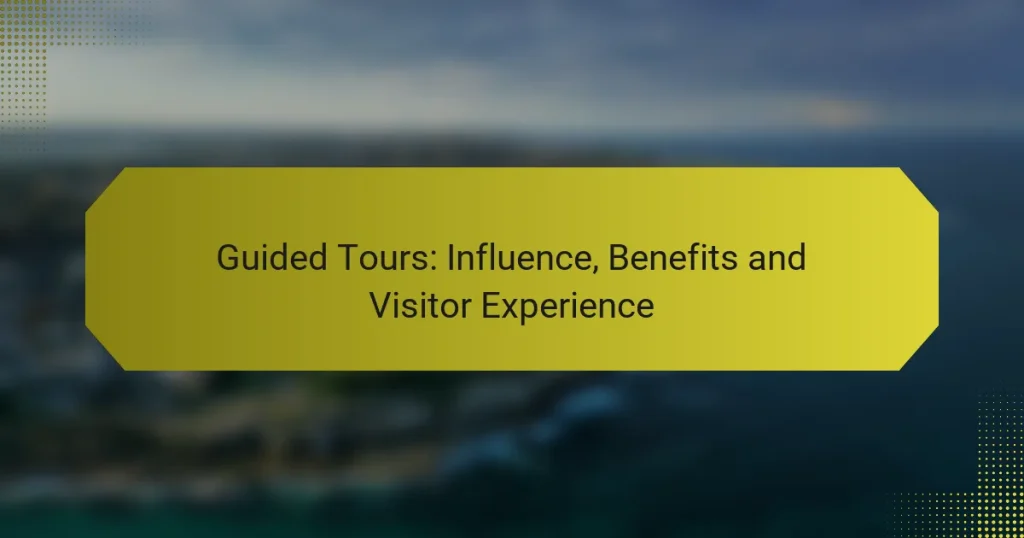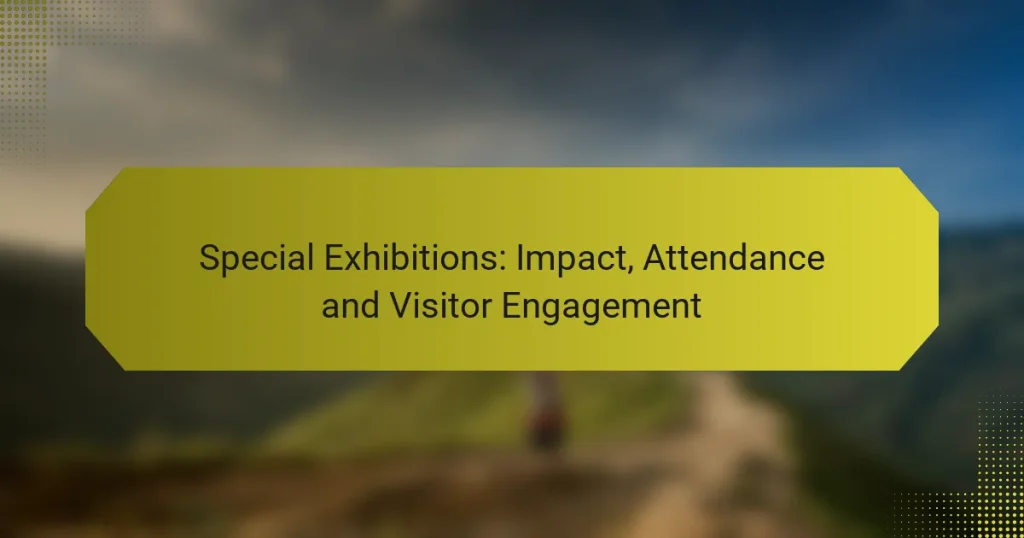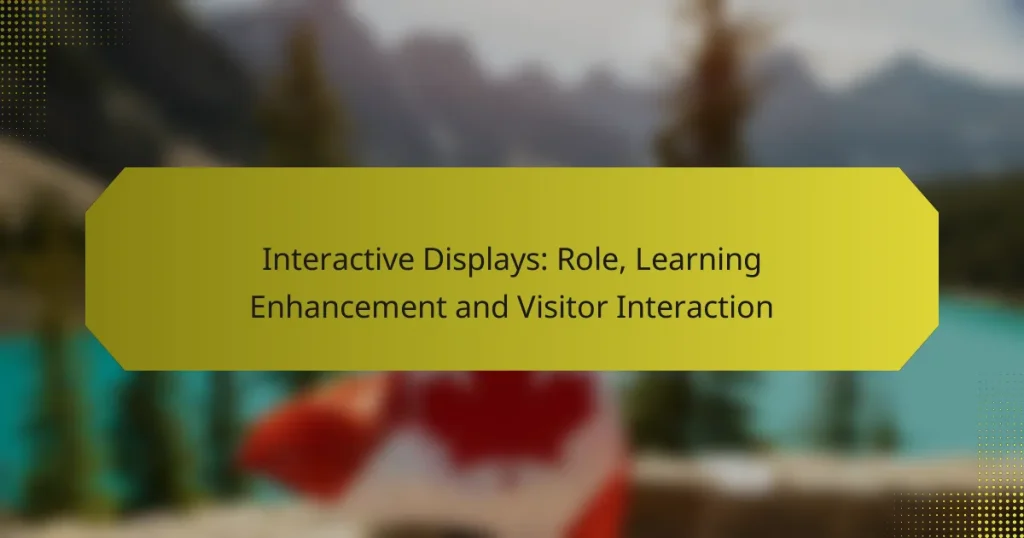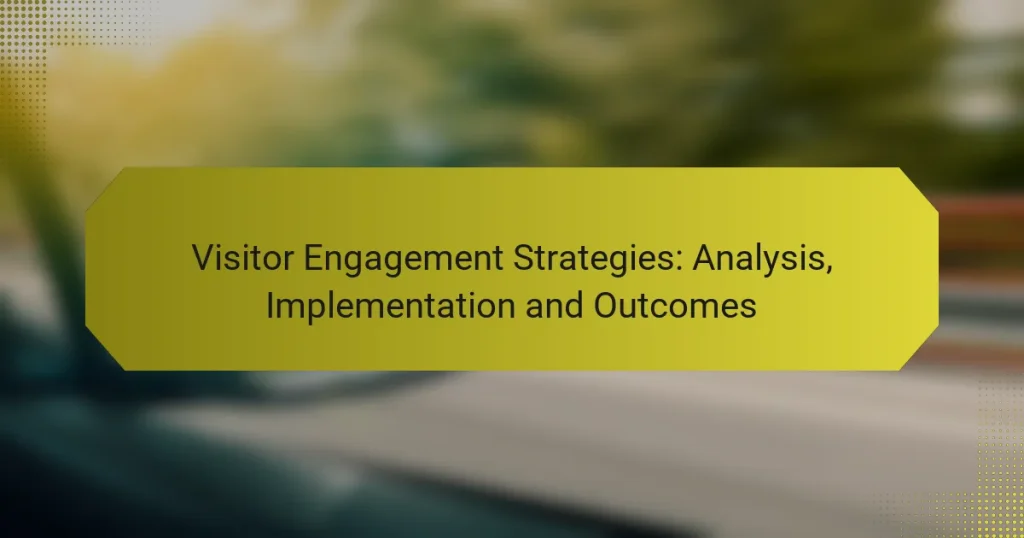World Heritage museums play a crucial role in enhancing visitor experiences through innovative strategies that foster engagement and learning. By incorporating interactive elements, personalized pathways, and advanced technologies, these institutions create memorable and immersive environments that cater to diverse audiences. The focus on visitor satisfaction and effective feedback mechanisms further enriches the overall experience, ensuring that each visit is both educational and enjoyable.
Accessibility Features: Evaluation, Impact and Inclusivity
Guided Tours: Influence, Benefits and Visitor Experience
Special Exhibitions: Impact, Attendance and Visitor Engagement
Technology in Visitor Experience: Tools, Innovations and Benefits
Interactive Displays: Role, Learning Enhancement and Visitor Interaction
Visitor Engagement Strategies: Analysis, Implementation and Outcomes
How can museums enhance visitor experience in London?
Museums in London can enhance visitor experience by incorporating interactive elements, expert-led tours, and immersive technologies. These strategies create engaging environments that cater to diverse audiences, ensuring memorable visits.
Interactive exhibits
Interactive exhibits allow visitors to engage directly with displays, fostering a deeper understanding of the content. For example, touchscreens or hands-on installations can illustrate complex concepts in an accessible way. Museums should consider incorporating technology that encourages participation, such as augmented reality features or gamified learning experiences.
When designing interactive exhibits, it’s essential to balance educational value with entertainment. Ensuring that activities are age-appropriate and accessible to all visitors can significantly enhance satisfaction and learning outcomes.
Guided tours with experts
Guided tours led by knowledgeable experts provide visitors with in-depth insights and context about the exhibits. These tours can be tailored to specific interests, such as art history or cultural heritage, making the experience more personal. Offering multiple tour times throughout the day can accommodate varying schedules and preferences.
To maximize engagement, museums should train guides to be approachable and enthusiastic. Consider offering themed tours or special events that align with current exhibitions to attract repeat visitors.
Virtual reality experiences
Virtual reality (VR) experiences can transport visitors to different times and places, enhancing their understanding of historical contexts. By using VR headsets, visitors can explore ancient civilizations or witness significant events in an immersive way. Museums should ensure that these experiences are user-friendly and accessible to all age groups.
Implementing VR can require significant investment in technology and training. However, the potential to attract tech-savvy audiences and offer unique experiences can justify the costs. Regularly updating VR content can keep the offerings fresh and encourage repeat visits.
Family-friendly activities
Family-friendly activities are crucial for attracting visitors with children. Museums can offer workshops, scavenger hunts, or storytelling sessions that engage younger audiences while educating them about exhibits. Providing designated play areas or interactive zones can also enhance the overall family experience.
To cater to families, museums should consider scheduling activities during weekends and school holidays. Offering discounted family tickets or group rates can make visits more affordable and encourage larger groups to explore together.
What are the best practices for visitor engagement in World Heritage museums?
Best practices for visitor engagement in World Heritage museums focus on creating immersive experiences that resonate with diverse audiences. This includes personalized pathways, interactive exhibits, and effective feedback mechanisms to enhance visitor satisfaction and learning.
Personalized visitor pathways
Personalized visitor pathways allow guests to tailor their museum experience based on interests and preferences. This can be achieved through mobile apps that suggest routes or highlight specific exhibits, ensuring that visitors engage with content that resonates with them.
To implement personalized pathways, museums can utilize visitor data to create profiles and recommend tailored experiences. For example, a family with children might receive suggestions for interactive displays, while art enthusiasts could be directed to specific galleries or installations.
Feedback collection mechanisms
Effective feedback collection mechanisms are essential for understanding visitor experiences and improving engagement strategies. Museums can use digital surveys, comment cards, or interactive kiosks to gather insights on what visitors enjoyed or what could be improved.
Consider offering incentives for feedback, such as discounts on future visits or entry into a prize draw. Additionally, ensure that feedback channels are easily accessible and user-friendly, allowing visitors to share their thoughts without hassle. Regularly reviewing this feedback can guide enhancements to exhibits and services, fostering a more engaging environment.
How do technology and innovation improve museum visits?
Technology and innovation enhance museum visits by providing interactive and personalized experiences that engage visitors more deeply. Tools like mobile apps and augmented reality features help navigate exhibits and enrich the storytelling of artifacts.
Mobile apps for navigation
Mobile apps serve as essential tools for navigating museums, offering maps, exhibit information, and visitor services at your fingertips. Many museums now provide apps that allow users to create personalized itineraries based on their interests.
These apps often include features like audio guides, event calendars, and real-time updates on crowd levels, which can significantly improve the visitor experience. For example, a visitor can use an app to find the shortest route to a specific exhibit while avoiding crowded areas.
Augmented reality features
Augmented reality (AR) features in museums create immersive experiences by overlaying digital information onto the physical environment. This technology can bring static displays to life, allowing visitors to interact with historical figures or visualize ancient artifacts in their original context.
For instance, AR applications may enable users to point their devices at a painting to see a 3D animation of its creation process or to explore a virtual reconstruction of a historical site. This not only enhances understanding but also makes learning more engaging.
What role does accessibility play in visitor experience?
Accessibility is crucial for enhancing visitor experience in World Heritage museums, ensuring that all individuals can engage with exhibits and facilities. It encompasses physical access, information availability, and support services tailored to diverse needs.
Wheelchair access and facilities
Wheelchair access is a fundamental aspect of museum accessibility, involving ramps, elevators, and spacious pathways. Museums should adhere to local regulations, such as the Americans with Disabilities Act (ADA) in the U.S., which mandates accessible routes and facilities.
Facilities like accessible restrooms and designated seating areas further enhance the experience for wheelchair users. Regular maintenance and clear signage are essential to ensure these features remain effective and welcoming.
Multilingual resources
Multilingual resources significantly improve the visitor experience by accommodating non-native speakers. Providing information in multiple languages, such as brochures, audio guides, and digital apps, helps diverse audiences fully engage with the museum’s content.
To effectively implement multilingual resources, museums should prioritize the most common languages spoken by their visitors. Offering translations in at least three to five languages can cater to a broad audience, enhancing inclusivity and understanding.
How do cultural programs influence visitor satisfaction?
Cultural programs significantly enhance visitor satisfaction by providing engaging and immersive experiences. These activities create opportunities for deeper connections with the exhibits and foster a sense of community among attendees.
Workshops and lectures
Workshops and lectures offer visitors hands-on learning experiences and expert insights into the museum’s collections. These programs can range from art-making sessions to historical discussions, catering to diverse interests and age groups.
For instance, a museum might host a series of weekend workshops where participants can create their own pottery inspired by ancient techniques. Such interactive sessions often lead to higher satisfaction rates, as visitors feel more involved and invested in the museum’s mission.
Community events and collaborations
Community events and collaborations strengthen ties between the museum and local residents, enhancing the overall visitor experience. These initiatives often include festivals, art fairs, or partnerships with local schools, making the museum a vibrant part of the community.
For example, a museum might collaborate with local artists to showcase their work in a special exhibition, inviting the community to participate in the opening event. This approach not only attracts more visitors but also fosters a sense of ownership and pride among locals, ultimately boosting satisfaction levels.
What are the key metrics for measuring visitor experience?
Key metrics for measuring visitor experience include visitor satisfaction, engagement levels, and the overall emotional impact of the museum visit. These metrics help museums understand how well they are meeting visitor expectations and where improvements can be made.
Visitor surveys and feedback
Visitor surveys and feedback are essential tools for gathering insights into the visitor experience. These can be conducted through online questionnaires, in-person interviews, or feedback kiosks within the museum. Effective surveys typically include questions about satisfaction levels, specific exhibits, and overall impressions.
When designing surveys, focus on clear and concise questions to avoid confusion. Use a mix of quantitative ratings and qualitative open-ended questions to capture a broad range of feedback. For example, ask visitors to rate their experience on a scale of 1 to 5, followed by an open question about what they enjoyed most or what could be improved.
To maximize response rates, consider offering incentives such as discounts on future visits or entries into a prize draw. Regularly reviewing and acting on feedback can significantly enhance the visitor experience and foster a sense of community engagement.

